Olympus ZUIKO DIGITAL ED 7-14mm 1:4.0 review
-
-
Written by Gordon Laing
Quality
Pictured below from left to right are the ZUIKO DIGITAL 50mm macro, the older 14-45mm and 40-150mm kit lenses, and the 7-14mm. With a length of 120mm and diameter of 87mm, it’s clearly the largest of the group, and weighing 780g, the heaviest too. This contrast is even greater when compared against the latest compact kit lenses for the E-400, E-410 and E-510. Certainly the lens feels a little unbalanced when mounted on the tiny E-400 and E-410.
The extreme wide angle coverage of the 7-14mm lens means there’s no option to attach a filter, although it features a built-in petal hood and comes supplied with a metal cap which slips over it.

|
The build quality of the 7-14mm is excellent and of a significantly higher standard than the kit lenses commonly bundled with the Olympus D-SLRs. Sporting a metal housing, the 7-14mm feels reassuringly solid and well-built with smooth zoom and manual focusing rings. Olympus claims the 7-14mm and other lenses in its Pro and Top pro categories are both dust and splash proof, and certainly during our test period it felt like it could stand up to any knocks.
Below is the 7-14mm zoomed-out to 7mm on the left and zoomed-in to 14mm on the right. As you can see, there’s very little difference between the two states, with the highly curved first element moving only slightly during the zooming motion.
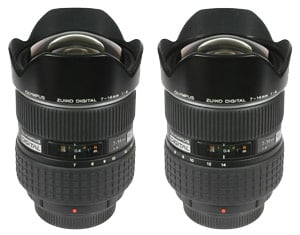 |
The optical design consists of 18 elements in 12 groups including two aspherical, two super ED and one ED glass elements. It features internal focusing and a fixed aperture of f4.0 throughout the entire range. Focusing is fast and quiet.
Like other ZUIKO DIGITAL lenses, the 7-14mm employs motorised manual focusing. Since Olympus bodies like the E-500 and E-510 can switch between clockwise or anti-clockwise operation of the focusing ring, this can result in quite an eerie effect where the ring could be turned one way and the distance markings in the lens window turn the other. Fitted to an Olympus DSLR, the lens focus also resets itself to infinity when you power the camera down.
Some photographers find the fully motorised focusing system works fine, while others prefer a direct mechanically-linked system. Either way, it’s not a significant issue for the 7-14mm which enjoys such wide coverage and large depths of fields, that it’s hard to get an out-of-focus result. See our Olympus E-410 review for more details on this subject.
Olympus ZD 7-14mm coverage, taken with Olympus E-410
The Four Thirds standard effectively multiplies the focal length of all lenses by two times, so the ZUIKO DIGITAL ED 7-14mm offers a coverage equivalent to 14-28mm on a 35mm or full frame system. Even considering the two-times factor, that’s pretty wide-angle by any standard, and as mentioned earlier, Olympus claims it’s the World’s widest digital zoom lens.
To illustrate this coverage in practice we shot the same scene with the 7-14mm and the latest 14-42mm ZUIKO DIGITAL kit lens within moments of each other using an Olympus E-410; the camera was mounted on a tripod to ensure a consistent position.
Below are the results from the 7-14mm ZUIKO DIGITAL lens, and even before comparing them against anything else, the wide end of the zoom clearly shows a massive field being captured. This provides wonderfully creative opportunities, whether capturing enormous landscapes or exploiting the 10cm closest focusing distance to get right up to your subject. When zoomed-out, you can enjoy enormous depths of field even with relatively wide-open apertures, and the coverage is also handy when you simply can’t step back any further.
While this wide-end is obviously quite extreme, zooming-in to the ‘long’ end delivers more typical wide-angle coverage, including the popular equivalent focal lengths of 24 and 28mm; this makes it a flexible focal range for wide-angle fans.
Olympus ZUIKO DIGITAL ED 7-14mm 1:4.0 coverage | ||
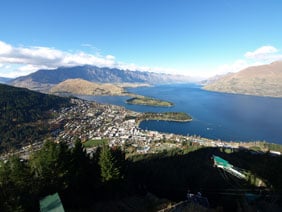 | 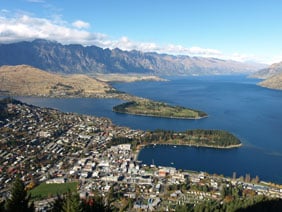 | |
| 7-14mm at 7mm, f8 (14mm equivalent) | 7-14mm at 14mm, f8 (28mm equivalent) | |
Below are the results from the 14-42mm ZUIKO DIGITAL kit lens, clearly illustrating the differences in coverage between this standard 3x optical zoom and the specialist 7-14mm model.
Olympus ZUIKO DIGITAL 14-42mm ED 1:3.5-5.6 coverage | ||
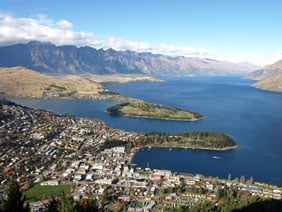 | 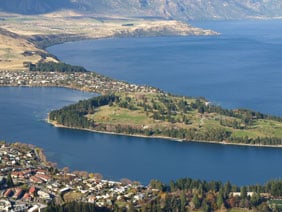 | |
| 14-42mm at 14mm, f8 (28mm equivalent) | 14-42mm at 42mm, f8 (84mm equivalent) | |
Olympus ZD 7-14mm ED versus 14-42mm ED tested with Olympus E-410
Olympus ZD 7-14mm results continued…
Outdoor / Resolution / Corner sharpness / Fringe and macro / Geometry / Vignetting
 |
|
To compare the real-life performance of the Olympus ZD 7-14mm lens we we shot the same scene with it and the latest ZD 14-42mm ED kit lens within moments of each other using an Olympus E-410. Each lens was set to 14mm f8 using the E-410 in Aperture Priority mode. The E-410 recording mode was set to SHQ with its default settings for tone and noise reduction. The crops are taken from the originals and presented here at 100%. The image left was taken with the Olympus E-410 using the 7-14mm at 14mm f8; the original JPEG measured 7.04MB. |
At first glance the results from both lenses set to 14mm f8 look quite similar, although there are subtle differences under closer inspection. The 7-14mm has a slight edge on detail and contrast in the middle row of crops, and the small amount of coloured fringing around the skylights on the final 14-42mm crop is less apparent on the 7-14mm sample. Under these settings and conditions though, it’s certainly a close run.
 Where the 7-14mm really impresses though is zoomed-out with its aperture wide open. Where many lenses would reveal noticeable issues, the 7-14mm continues to deliver pin-sharp images, packed with detail. You can see several examples in our updated Olympus 7-14mm Gallery. |
Olympus ZUIKO DIGITAL ED 7-14mm 1:4.0 |
Olympus ZUIKO DIGITAL ED 14-42mm 1:3.5-5.6 | |
 | ||
1/200, f8, 100 ISO |
1/200, f8, 100 ISO | |
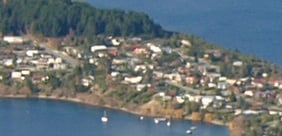 | 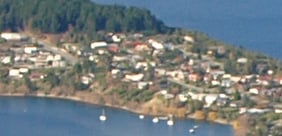 | |
1/200, f8, 100 ISO |
1/200, f8, 100 ISO | |
 | 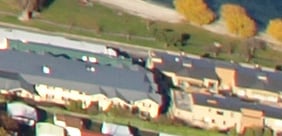 | |
1/200, f8, 100 ISO |
1/200, f8, 100 ISO |
Olympus ZD 7-14mm resolution, tested with Olympus E-410
Olympus ZD 7-14mm results continued…
Outdoor / Resolution / Corner sharpness / Fringe and macro / Geometry / Vignetting
|
|
To measure and compare the Olympus ZD 7-14mm’s resolving power we photographed the Enhanced Digital Camera Resolution Chart with it and a number of lens / camera combinations, each using their best quality JPEG and default image tone and sharpening settings. Each lens was tested at every aperture and the sharpest result selected. We tested the ZD 7-14mm with an Olympus E-410. The crops are taken from the original images, saved as High Quality JPEGs in Photoshop CS2 and presented here at 100%. Each number represents 100 lines per picture height (lpph), so a figure of 20 means a resolution of 2000 lpph. |
| Fitted on an Olympus E-410 and zoomed-into its maximum focal length of 14mm, the Olympus 7-14mm delivers 2150 lpph of horizontal and vertical resolution. The puts it on par with the latest 14-42mm ED kit lens, fitted to the same body, which suggests we’re at or close to the limit of the E-410’s resolving power. There’s some evidence of coloured fringing on the 7-14mm samples below, but it’s still a good result for this speciality lens, which under a variety of settings and conditions, continues to deliver very sharp results. |
Olympus ZD 7-14mm with E-410 |
Olympus ZD 14-42mm with E-410 | |
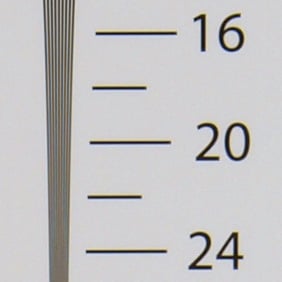 | 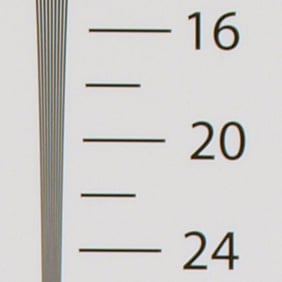 | |
2150 lpph, 7-14mm at 14mm, f8, 100 ISO |
2150 lpph, 14-42mm at 25mm, f8, 100 ISO | |
Olympus ZD 14-42mm with E-400 |
Leica 14-50mm with E-400 | |
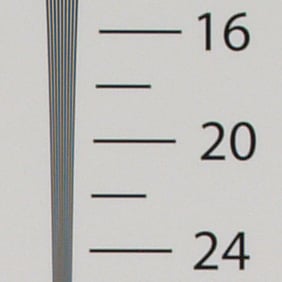 | 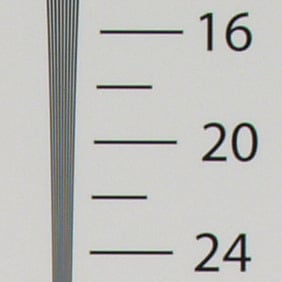 | |
2050 lpph, 14-42mm at 25mm, f8, 100 ISO |
2100 lpph, 14-50mm at 25mm, f8, 100 ISO |
Olympus ZD 7-14mm with E-410 |
Olympus ZD 14-42mm with E-410 | |
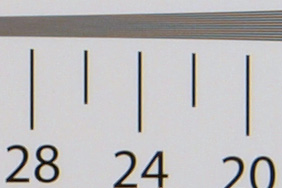 | 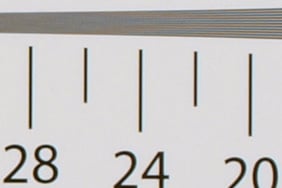 | |
2150 lpph, 7-14mm at 14mm, f8, 100 ISO |
2150 lpph, 14-42mm at 25mm, f8, 100 ISO | |
Olympus ZD 14-42mm with E-400 |
Leica 14-50mm with E-400 | |
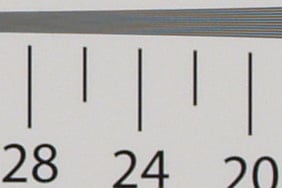 | 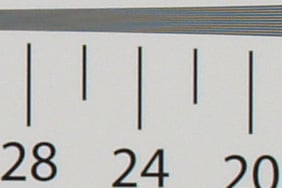 | |
2050 lpph, 14-42mm at 25mm, f8, 100 ISO |
2100 lpph, 14-50mm at 25mm, f8, 100 ISO |
Olympus ZD 7-14mm corner sharpness, tested with Olympus E-410
Olympus ZD 7-14mm results continued…
Outdoor / Resolution / Corner sharpness / Fringe and macro / Geometry / Vignetting
|
|
To compare corner sharpness we photographed the Enhanced Digital Camera Resolution Chart with a variety of Four Thirds lenses, including the 7-14mm, both the new and old Olympus kit zooms, and the Leica 14-50mm. Each lens was tested at its widest and longest focal lengths and with various apertures using Aperture Priority mode. The crops are taken from the lower left corner of the chart and presented here at 100%. Some crops show a larger area of the chart because the minimum focusing distances forced us to shoot from further away; the older ZD 14-45mm was also mounted on the E-500 which has a lower resolution. No crops have been resized. |
The Olympus 7-14mm lens clearly exhibits purple fringing in its extreme corners in this test when zoomed-out, but at a focal length of 7mm, the lens was positioned extremely close to our chart for it to fill the frame. The effect of coloured fringing reduces at longer distances and we rarely noticed it in our real-life shots as seen on our Gallery. Zoomed-into 14mm, the fringing is much reduced. In terms of actual sharpness in the corners though, the 7-14mm performs very well, both in this test at very close range, and also with subjects further away, again as seen in our Gallery. It’s a very well-corrected lens. |
Olympus ZD 7-14mm |
Olympus ZD 14-42mm ED |
Olympus ZD 14-45mm |
Leica 14-50mm | |||
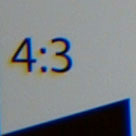 | 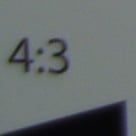 | 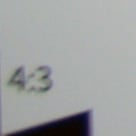 | 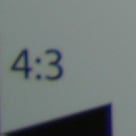 | |||
7-14mm at 7mm f4 |
14-42mm at 14mm f3.5 |
14-45mm at 14mm f3.5 |
14-50mm at 14mm f2.8 | |||
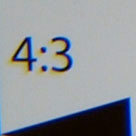 | 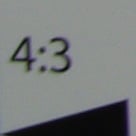 | 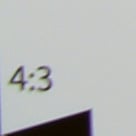 | 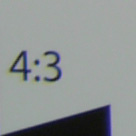 | |||
7-14mm at 7mm f8 |
14-42mm at 14mm f8 |
14-45mm at 14mm f8 |
14-50mm at 14mm f8 | |||
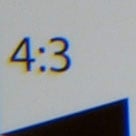 | 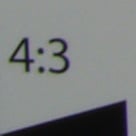 | 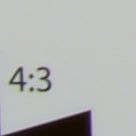 | 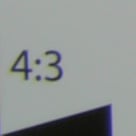 | |||
7-14mm at 7mm f16 |
14-42mm at 14mm f16 |
14-45mm at 14mm f16 |
14-50mm at 14mm f16 | |||
Olympus ZD 7-14mm |
Olympus ZD 14-42mm ED |
Olympus ZD 14-45mm |
Leica 14-50mm | |||
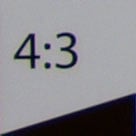 | 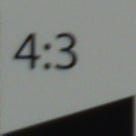 | 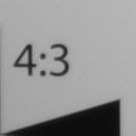 | 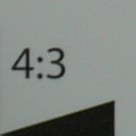 | |||
7-14mm at 14mm f4 |
14-42mm at 42mm f5.6 |
14-45mm at 45mm f5.6 |
14-50mm at 50mm f3.5 | |||
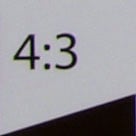 | 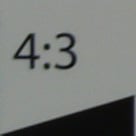 | 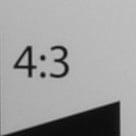 | 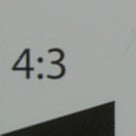 | |||
7-14mm at 14mm f8 |
14-42mm at 42mm f8 |
14-45mm at 45mm f8 |
14-50mm at 50mm f8 | |||
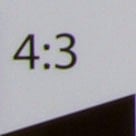 | 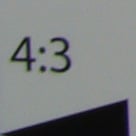 | 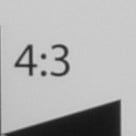 | 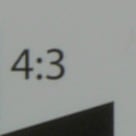 | |||
7-14mm at 14mm f16 |
14-42mm at 42mm f16 |
14-45mm at 45mm f16 |
14-50mm at 50mm f16 |
Olympus ZD 7-14mm colour fringing comparison
Olympus ZD 7-14mm results continued…
Outdoor / Resolution / Corner sharpness / Fringe and macro / Geometry / Vignetting

|
|
To measure colour fringing caused by lens chromatic aberrations and sensor blooming, we photographed a test chart, left, with areas of very high contrast. We tested each lens at its widest and longest focal lengths with the aperture wide open in Aperture Priority mode. The crops are taken from the upper left corner of the chart and presented here at 100%. |
| All four lenses exhibited some fringing at wide angle. Zoomed-in to their longest focal lengths, the four lenses were much improved in this respect. |
Olympus ZD 7-14mm |
Olympus ZD 14-42mm |
Olympus ZD 14-45mm |
Leica 14-50mm | |||
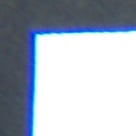 | 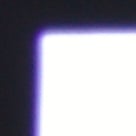 | 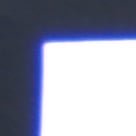 | 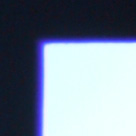 | |||
7-14mm at 7mm f4 |
14-42mm at 14mm f3.5 |
14-45mm at 14mm f3.5 |
14-50mm at 14mm f2.8 | |||
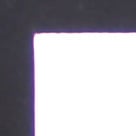 | 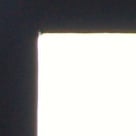 | 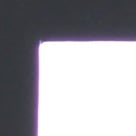 | 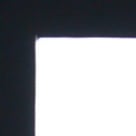 | |||
7-14mm at 14mm f4 |
14-42mm at 42mm f5.6 |
14-45mm at 45mm f5.6 |
14-50mm at 50mm f3.5 |
|
|
To measure macro performance we photographed a chart using settings which delivered the maximum possible reproduction. The dark lines are 10mm apart. Each lens was tested at f8 in Aperture Priority mode. The 7-14mm can focus as close as 10cm, but even when zoomed-in to it’s longest 14mm focal length, there’s still a massive field of view captured. Consequently its Macro reproduction size comes across as quite modest, but it’s important to see how well-corrected it remains at close range, and also how the lens can be used at short distances. |
Olympus ZUIKO DIGITAL ED 7-14mm 1:4.0 |
Olympus ZUIKO DIGITAL ED 14-42mm 1:3.5-5.6 |
Olympus ZUIKO DIGITAL 14-45mm 1:3.5-5.6 | ||
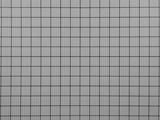 | 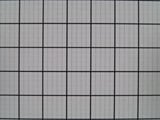 | 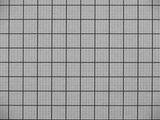 | ||
|
7-14mm at 14mm f8 Max area of 162x122mm |
14-42mm at 42mm f8 Max area of 68x50mm |
14-45mm at 45mm f8 Max area of 112x84mm |
Olympus ZD 7-14mm 1:4:0 geometry comparison (shortest focal length)
Olympus ZD 7-14mm results continued…
Outdoor / Resolution / Corner sharpness / Fringe and macro / Geometry / Vignetting
To measure geometric distortion we photographed a chart consisting of a grid pattern with perfectly straight lines. The lenses were tested at their widest focal lengths with an aperture of f8. The images were analysed with Imatest using 5th Order line calculation and the full areas presented here at a reduced resolution. An excellent result for the 7-14mm lens here, which exhibits minimal distortion when zoomed-out. This is particularly impressive given the extreme wide angle nature of the lens at this focal length. Indeed it shows less geometric distortion than most DSLR kit lenses, along with Canon’s 17-40mm L. |
Olympus ZUIKO DIGITAL ED 7-14mm 1:4.0 |
Olympus ZUIKO DIGITAL ED 14-42mm 1:3.5-5.6 |
Olympus ZUIKO DIGITAL 14-45mm 1:3.5-5.6 | ||
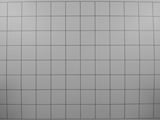 | 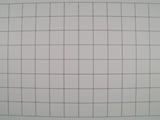 | 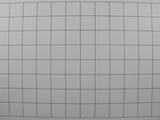 | ||
|
7-14mm at 7mm f8 Distortion: 2.34% barrel |
14-42mm at 14mm f8 Distortion: 2.97% barrel |
14-45mm at 14mm f8 Distortion: 3.28% barrel |
Olympus ZD 7-14mm 1:4:0 geometry comparison (longest focal length) To measure geometric distortion we photographed a chart consisting of a grid pattern with perfectly straight lines. The lenses were tested at their longest focal lengths with an aperture of f8. The images were analysed with Imatest using 5th Order line calculation and the full areas presented here at a reduced resolution. Zoomed-in, the 7-14mm again exhibits minimal geometric distortion, and considerably less than either of the kit lenses at the same 14mm focal length (see results above). The 7-14mm performs very well in this test. |
Olympus ZUIKO DIGITAL ED 7-14mm 1:4.0 |
Olympus ZUIKO DIGITAL ED 14-42mm 1:3.5-5.6 |
Olympus ZUIKO DIGITAL 14-45mm 1:3.5-5.6 | ||
 | 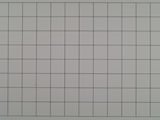 | 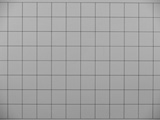 | ||
|
7-14mm at 14mm f8 Distortion: 0.138% pincushion |
14-42mm at 42mm f8 Distortion: 0.21% barrel |
14-45mm at 45mm f8 Distortion: 0.48% barrel |
Olympus ZD 7-14mm 1:4:0 uniformity comparison (shortest focal length)
Olympus ZD 7-14mm results continued…
Outdoor / Resolution / Corner sharpness / Fringe and macro / Geometry / Vignetting
|
To measure lens vignetting and light fall-off we photographed a white target with a highly diffused custom filter. The lenses were tested at their widest focal lengths with the aperture wide open in Aperture Priority mode. The images were analysed with Imatest and the full areas presented here at a reduced resolution. Bigger percentages are better. Most wide angle lenses suffer from significant light fall-off, but the Olympus 7-14mm performs remarkably well in this regard especially considering its extreme coverage, losing just one quarter of its light in the far corners. Try comparing it with Canon’s 17-85mm EF-S which at 17mm on a cropped body falls off to 57.8%, or to almost half the brightness at the corners; see here. Lenses for full-frame bodies perform even worse in this regard – compare the Canon 24-105mm and 17-40mm lenses on the Canon EOS 5D which at wide angle and f4 see the light fall off by almost two thirds in the corners; see here. Note: the off-center nature of the 7-14mm result is due to the difficulty capturing our target at such a wide angle. |
Olympus ZUIKO DIGITAL ED 7-14mm 1:4.0 |
Olympus ZUIKO DIGITAL ED 14-42mm 1:3.5-5.6 |
Olympus ZUIKO DIGITAL 14-45mm 1:3.5-5.6 | ||
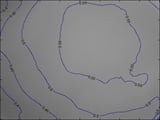 | 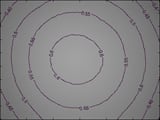 | 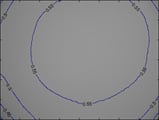 | ||
|
7-14mm at 7mm f4 Mean corner fall-off: 75.1% |
14-42mm at 14mm f3.5 Mean corner fall-off: 63.6% |
14-45mm at 14mm f3.5 Mean corner fall-off: 74.1% |
|
Olympus ZUIKO DIGITAL ED 7-14mm 1:4.0 |
Olympus ZUIKO DIGITAL ED 14-42mm 1:3.5-5.6 |
Olympus ZUIKO DIGITAL 14-45mm 1:3.5-5.6 | ||
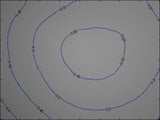 | 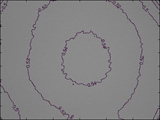 | 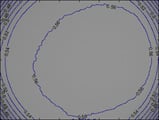 | ||
|
7-14mm at 14mm f4 Mean corner fall-off: 75.1% |
14-42mm at 42mm f5.6 Mean corner fall-off: 85.7% |
14-45mm at 45mm f5.6 Mean corner fall-off: 71.3% |





